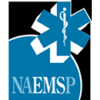This article originally appeared in the Article Bites blog of the National Association of EMS Physicians and is reprinted here with permission.
Article Summary by Emerson Franke, MD, EMT, FAAEM, (@EmersonFrankeMD)
Background. Pain control in the prehospital setting varies from agency to agency, and may be limited to advanced prehospital providers. Pain is a common reason for EMS calls and is also common in patients experiencing trauma. Pain in the prehospital setting is known to be inadequately treated, up to 43% of adults and 83% of pediatrics. The reasons for under-treating pain in the prehospital setting could be due to several factors, including adverse effects and/or abuse potential. Evaluating the pain relief and harm of non-opioid analgesics for severe pain could allow for improved pain management with decreased reliance on opioids.
Methods. Published studies were reviewed including randomized controlled trials (RCTs), cohort studies, case-control studies of patients with moderate to severe pain. This was determined by study inclusion criteria, baseline pain scores, or a study involving ketamine or opioids. Studies that also evaluated for rescue analgesics were studies separately from the initial treatment. Pain involving labor and delivery, non-zero or mild pain were excluded.
Studies were also evaluated based on the medication they utilized; including fentanyl, morphine, acetaminophen, ketamine, nitrous oxide, non-steroidal anti-inflammatory drugs (NSAIDs) and ketamine-opioid combinations. The effect of any of these medications were recorded, including time to effect, pain scores, adverse effects, and memory of pain.
Results. Out of 4,907 studies that were found, 65 studies met the inclusion criteria for complete review, which included 57 RCTs and 13 observational studies. The majority of patients were adults between the second and fourth decade with varying causes of pain. Due to insufficient prehospital evidence, conclusions for initial analgesia is based on indirect evidence in the emergency department setting. Most medications were administered intravenously, some included intranasal ketamine and fentanyl.
Ketamine vs. opioids
There was not enough prehospital literature to directly determine which treatment was more effective in the prehospital setting. Literature from the emergency department was utilized to make an indirect conclusion. At time points after medication administration, 15 minutes, 30 minutes, 60 minutes; there was no clinically significant different in pain scores. Opiates cause fewer total adverse effects and less dizziness than ketamine. Ketamine causes less respiratory depression than opiates. Ketamine may also be quicker than opiates to reduce pain. As a rescue medication, Ketamine may reduce pain more than opiates and allow for a lower total dose of opiates to be given.
Opioids + ketamine vs. opioids
At time points after medication administration, 15 minutes and 30 minutes, the combination of opiates and ketamine may reduce pain more effectively than an opiate alone. However, at 60 minutes, there was no difference between the combination of ketamine + opioid versus opioids alone. There was not enough data to evaluate for adverse effects in these comparisons.
Opioids vs. acetaminophen
At time points after medication administration, 15 minutes, 30 minutes, 60 minutes; there was no clinically significant different in pain scores. There was also no different in time to analgesic effect when comparing opioids and acetaminophen. Opioids were found to cause more adverse effects, including dizziness, compared to acetaminophen. There was no difference in hypotension between opioids and acetaminophen.
Opioids vs. nitrous oxide
There was not enough data to make conclusions regarding this comparison as there was only one RCT found.
Opioids vs. nonsteroidal anti-inflammatory drugs
At time points after medication administration 30 minutes and 60 minutes; there was no clinically significant different in pain scores. Opioids cause more adverse events and drowsiness than NSAIDs.
What does this mean for EMS?
This paper reviewed the existing evidence in an attempt to answer the question: what is the most efficacious pain medication in the prehospital setting? Unfortunately, most of the data was insufficient and/or limited to answer the question well.
The EMS clinician or medical director can still extrapolate a few learning points:
- A multimodal approach to pain management should be employed for all patients, with appropriate risks and adverse effects considered.
- Non-opioid medications have fewer immediate adverse effects and can manage pain comparably to opiates.
- The addition of ketamine to opioids may be more effective in reducing pain compared with opioids alone.
Ultimately each patient population has their unique challenges, and again the use of a multi-modal approach to prehospital pain management should employ opioid and non-opioid analgesics.
Editing by EMS MEd Editor James Li, MD (@JamesLi_17)
Read more:
Understanding pain management
An overview of pain and sedation for the prehospital provider




